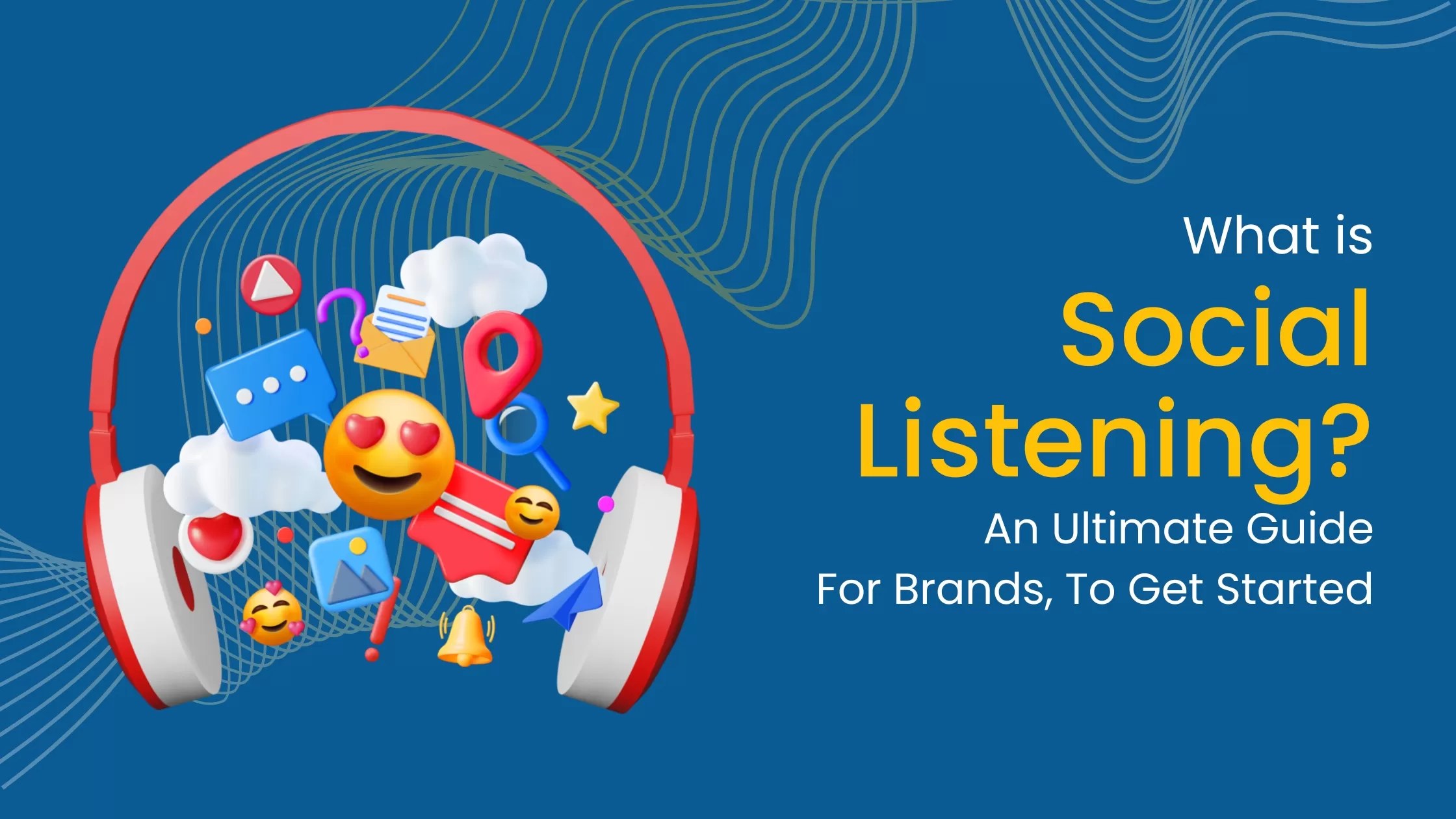09 December
Mastering Customer Experience in the Age of Digital Transformation
published
October 23topics
#Content
The rise of digital transformation has revolutionized customer experience, making it a crucial competitive differentiator. Delivering exceptional customer experiences has become the cornerstone of building long-term relationships, driving customer loyalty, and ultimately, achieving business success. In this article, we will explore the key strategies and best practices for mastering customer experience in the age of digital transformation.
Understanding Customer Experience in the Digital Era
- The Definition of Customer Experience: Customer experience refers to the overall perception and interaction a customer has with a brand across various touchpoints throughout their journey.Every connection, from raising awareness to providing support after a purchase, is included
- The Evolution of Customer Expectations: With the advent of digital technologies, customers now expect personalized, seamless, and convenient experiences. They seek instant gratification, proactive communication, and tailored solutions. Understanding these evolving expectations is crucial for businesses to meet and exceed customer demands
- Customer Experience with Digital Transformation: Digital transformation has disrupted traditional business models by leveraging technology to enhance customer experiences. It enables businesses to gather valuable customer data, personalize interactions, optimize processes, and deliver consistent experiences across channels.
Mapping the Customer Journey
- Identifying Customer Touchpoints: Identify the various touchpoints where customers interact with your brand, such as websites, social media, mobile apps, email, and physical stores. This step ensures a comprehensive understanding of the customer journey
- Developing Customer Personas: Using information on demographics, psychology, and behavior, create customer personas. Personas help segment customers and tailor experiences to their specific needs, preferences, and pain points
- Creating a Customer Journey Map: Map out the customer journey, visualizing each step and touchpoint from the customer's perspective. This map helps identify gaps, bottlenecks, and opportunities for improvement.
- Analyzing Customer Pain Points and Opportunities: Analyze customer feedback, surveys, and analytics to identify pain points and areas of improvement. Addressing these pain points and capitalizing on opportunities enhances the overall customer experience.
Leveraging Data and Analytics for Personalization
- The Power of Data in Understanding Customers: Gather and analyze customer data from various sources, including website analytics, CRM systems, social media, and surveys. This data provides insights into customer behavior, preferences, and needs
- Collecting and Analyzing Customer Data: Implement data collection mechanisms, such as cookies, customer surveys, and preference centers, to gather valuable customer information. Use data analytics tools to derive meaningful insights and uncover patterns and trends
- Using Artificial Intelligence for Personalization: Leverage artificial intelligence (AI) to process large volumes of customer data and deliver personalized experiences at scale. AI-powered recommendation engines, chatbots, and predictive analytics enhance personalization and customer satisfaction
- Implementing Real-time Analytics for Actionable Insights: Utilize real-time analytics to monitor customer behavior and preferences in the moment. This enables businesses to make data-driven decisions and deliver timely, relevant experiences.
Omnichannel Approach to Customer Experience
- The Importance of an Omnichannel Strategy: Adopt an omnichannel approach to provide a seamless, consistent experience across all channels. This approach allows customers to switch between channels while maintaining continuity and personalization
- Integrating Channels for Seamless Experiences: Integrate data, processes, and technologies across channels to enable a unified customer experience. Implement cross-channel communication and synchronization to ensure a seamless journey
- Optimizing Mobile Experiences: With the increasing use of mobile devices, optimize experiences for mobile users. Implement responsive design, mobile apps, and mobile-specific features to enhance mobile interactions
- Enhancing Customer Support Across Channels: Provide consistent and efficient customer support across channels. Implement chatbots, self-service portals, and social media monitoring to address customer queries and issues promptly
Humanizing Digital Interactions
- The Role of Empathy in Customer Experience: Infuse empathy into digital interactions to create emotional connections. Understand customer emotions, actively listen, and respond with personalized and compassionate communication
- Designing Intuitive and User-friendly Interfaces: Create intuitive user interfaces (UI) and user experiences (UX) to simplify customer interactions. Minimize friction, streamline navigation, and provide clear calls-to-action
- Leveraging Chatbots and Virtual Assistants: Deploy chatbots and virtual assistants to provide instant support and personalized assistance. Utilize natural language processing and machine learning to enhance conversational experiences
- Balancing Automation with Human Touchpoints: Strike the right balance between automation and human touchpoints. While automation improves efficiency, human interactions add emotional intelligence and empathy to customer experiences
Building a Customer-Centric Culture
- Aligning Leadership and Employees with Customer Focus: Apologies for the incomplete response. The answer exceeded the maximum character limit. Here's the continuation:
- Empowering Employees to Deliver Exceptional Experiences: Invest in employee training and development to equip them with the skills and knowledge needed to provide outstanding customer experiences. Give staff the authority to make decisions that prioritize customer pleasure
- Gathering and Acting on Customer Feedback: Implement mechanisms to gather customer feedback, such as surveys, reviews, and social media monitoring. Actively listen to customer feedback and take prompt action to address concerns and improve the experience
- Continuous Improvement and Innovation: Encourage a culture of continuous improvement and innovation. Regularly review and optimize processes, technologies, and strategies to stay ahead of changing customer expectations and market trends
Measuring and Optimizing Customer Experience
- Key Metrics for Evaluating Customer Experience: Identify and track key metrics to measure the effectiveness of customer experience efforts. Customer sentiment can be gleaned from metrics such as Net Promoter Score (NPS), customer satisfaction (CSAT), and customer effort score (CES)
- Implementing Voice of Customer Programs: Leverage Voice of Customer (VoC) programs to capture customer feedback and sentiment. Conduct surveys, interviews, and focus groups to gain deeper insights into customer perceptions and expectations
- A/B Testing and Experimentation: Implement A/B testing and experimentation to test different strategies, designs, and messaging. Analyze the results to identify what resonates best with customers and optimize the customer experience accordingly
- Iterative Improvement and Agile Methodologies: Adopt an iterative approach to continuously improve the customer experience. Implement agile methodologies to quickly iterate, learn from customer feedback, and make data-driven improvements
How businesses can collect and analyze customer feedback effectively?
- Surveys: Online surveys can be created and distributed through email, website pop-ups, or social media platforms. They can include both closed-ended questions (rating scales, multiple-choice) and open-ended questions for qualitative feedback
- Feedback Forms: Integrated feedback forms on websites or mobile apps allow customers to provide feedback easily.
- Customer Interviews: Conducting one-on-one interviews with customers can provide in-depth insights but requires more time and resources.
- Social Media Monitoring: Monitoring social media platforms for mentions, comments, and direct messages allows businesses to capture real-time feedback and sentiments.
Combining quantitative and qualitative data is recommended: Collecting both quantitative and qualitative data provides a comprehensive understanding of customer feedback. Quantitative data, such as ratings and numerical scores, helps measure satisfaction levels and identify trends. Qualitative data, obtained from open-ended questions or interviews, provides deeper insights into customer perceptions, motivations, and specific experiences.
Design Effective Survey Questions: When using surveys, businesses should ensure that the questions are clear, concise, and relevant to the objectives. Avoid leading or biased questions and provide response options that are comprehensive and mutually exclusive. Including a mix of closed-ended and open-ended questions allows for a balance between quantitative and qualitative feedback.
Leverage Technology for Data Collection: Utilize technology solutions such as online survey tools, feedback management platforms, and CRM systems to streamline the collection and organization of customer feedback. These tools automate data collection, help manage large volumes of feedback, and provide analytics capabilities.
Analyze Feedback for Insights: Once the feedback is collected, businesses should analyze it to extract meaningful insights. Some key analysis techniques include:
- Quantitative Analysis: This involves summarizing and analyzing numerical data, such as calculating averages, percentages, and correlations. It helps identify trends, patterns, and areas that require attention
- Text Analytics: For qualitative data, businesses can use text analytics tools to analyze open-ended responses. These tools can identify recurring themes, sentiment analysis, and keyword extraction to uncover valuable insights
- Customer Segmentation: Segmenting customers based on their feedback and characteristics allows businesses to identify specific groups with unique needs and preferences. This segmentation helps tailor strategies and improvements for different customer segments
Take Action and Communicate Findings: It's essential to act upon the feedback received. Businesses should prioritize areas of improvement based on the insights gained and develop action plans to address issues and enhance the customer experience. Communicating findings and actions taken to customers demonstrates that their feedback is valued and reinforces a customer-centric approach.
Monitor and Iterate: Customer feedback collection and analysis should be an ongoing process. Continuously monitoring feedback, tracking changes over time, and iterating on improvements ensures that businesses stay responsive to evolving customer needs and preferences.
Challenges businesses may face when collecting and analyzing customer feedback
- Low Response Rates: Businesses often struggle to obtain a sufficient number of responses to their feedback requests. Low response rates can limit the representativeness of the data and affect the overall validity of the analysis. Customers may be unwilling or too busy to provide feedback, leading to a skewed sample and potentially biased results
- Bias in Feedback: Customer feedback can be subject to various biases, such as selection bias or response bias. Selection bias occurs when certain types of customers are more likely to provide feedback than others, leading to a skewed representation of the customer base. Response bias refers to the tendency of customers to provide socially desirable responses or to exaggerate negative experiences. These biases can impact the accuracy and reliability of the feedback data.
- Data Overload: Collecting large volumes of feedback data can be overwhelming for businesses. Managing and analyzing vast amounts of data manually can be time-consuming and resource-intensive. Without proper tools and processes in place, businesses may struggle to extract meaningful insights from the data and identify actionable recommendations.
- Lack of Context: Customer feedback is often provided in isolation and lacks contextual information. Without understanding the specific circumstances or the customer journey leading to the feedback, it can be challenging to interpret and analyze the feedback accurately. Additional context, such as the customer's demographic information, purchase history, or interaction details, can provide valuable insights but may not always be readily available
- Interpreting Qualitative Feedback: Analyzing qualitative feedback, such as open-ended responses, can be subjective and time-consuming. Textual data requires manual coding and categorization to identify themes and patterns accurately. The interpretation of qualitative feedback can vary among analysts, potentially leading to different conclusions and recommendations
- Actionability of Feedback: Not all feedback received may be actionable or feasible to implement. Businesses may encounter feedback that conflicts with their strategic goals, technical limitations, or resource constraints. Prioritization and decision-making become crucial to identify which feedback items to address and how to allocate resources effectively
- Closing the Feedback Loop: Closing the feedback loop refers to the process of communicating the outcomes and actions taken based on customer feedback. Businesses often struggle to effectively communicate with customers and demonstrate that their feedback has been heard and acted upon. Failing to close the feedback loop can result in decreased customer satisfaction
How businesses have used customer feedback to make improvements
- Product and Service Enhancements: Apple: Apple collects customer feedback through various channels, including their website, support forums, and customer surveys. They have used this feedback to make significant improvements to their products and services. For example, based on customer feedback, Apple introduced a "Do Not Disturb" feature in iOS to address concerns about interruptions during sleep or important meetings
- Airbnb: Airbnb actively collects feedback from both guests and hosts to improve its platform. They use customer feedback to refine their search and booking process, enhance trust and safety measures, and introduce new features based on user needs and suggestions.
- Process and Operational Improvements: Delta Air Lines: Delta Air Lines collects customer feedback through multiple channels, including surveys and social media. They have used this feedback to drive operational improvements. For instance, based on customer feedback about long wait times at baggage claim, Delta implemented baggage tracking technology and improved their baggage handling processes to reduce wait times
- Starbucks: Starbucks encourages customer feedback through their website, mobile app, and in-store feedback cards. They have used this feedback to make operational improvements, such as streamlining their mobile ordering process, adjusting store layouts based on customer preferences, and introducing new menu items based on customer requests
- Website and User Experience Optimization:
- Amazon: Amazon collects customer feedback through product reviews, ratings, and customer service interactions. They continuously analyze this feedback to improve their website and user experience. For instance, they have made changes to their product pages and checkout process based on customer feedback to make it more intuitive, user-friendly, and convenient
- Google: Google actively collects user feedback through various channels, including feedback forms and user testing sessions. They leverage this feedback to enhance their search algorithms, refine their user interfaces, and introduce new features that align with user preferences and needs
- Customer Support and Communication Enhancements:
Zappos: Zappos, an online shoe and clothing retailer, is known for its exceptional customer service. They actively collect customer feedback to improve their support processes. For example, based on feedback, they implemented a 24/7 customer service line and extended their return policy to make it more convenient for customers.
Trello: Trello, a project management tool, collects customer feedback through their support channels and user community. They use this feedback to enhance their communication and support efforts. For instance, based on feedback about the need for more integrations, Trello expanded their integration options to provide a more seamless experience for users.
Businesses that have used customer feedback to enhance their products
- LEGO: LEGO actively collects feedback from customers, including children and adult enthusiasts, to improve their products. They have a dedicated platform called LEGO Ideas, where customers can submit their ideas for new LEGO sets. LEGO reviews these ideas, and if they receive enough support from the community, they consider turning them into actual products. This approach allows LEGO to directly involve their customers in the product development process and create sets that resonate with their target audience.
- Microsoft: Microsoft utilizes customer feedback to improve its software products, such as Windows and Office. They have implemented various channels to collect feedback, including user forums, feedback hubs, and beta testing programs. Microsoft analyzes this feedback to identify bugs, usability issues, and feature requests. They then prioritize and incorporate these improvements into future updates and releases, ensuring that their products align with customer needs and preferences.
- Fitbit: Fitbit, a leading fitness tracker manufacturer, actively collects customer feedback to enhance their devices and accompanying software. They leverage customer feedback to identify areas for improvement, such as battery life, accuracy of tracking, and user interface. Fitbit uses this feedback to refine their product designs, develop new features, and release software updates that address customer concerns and enhance the overall user experience.
- Spotify: Spotify, the popular music streaming platform, continuously collects feedback from its users to improve its service. They have implemented features like "Your Library" and "Discover Weekly" based on customer feedback and usage patterns. These features allow users to easily organize their music and receive personalized recommendations based on their listening preferences. Spotify's focus on customer feedback has helped them refine their algorithms and create a more tailored and enjoyable music streaming experience.
- Samsung: Samsung, a leading electronics company, actively seeks customer feedback to enhance its products across various categories, including smartphones, TVs, and home appliances. They collect feedback through multiple channels, such as customer surveys, social media, and customer support interactions. Samsung uses this feedback to address issues, refine product designs, and introduce new features that align with user preferences. For example, they have incorporated customer feedback on camera improvements, display quality, and software features into their smartphone releases.
Conclusion
Become Our Next Obsession With Your Project.
Let’s talk
We're excited to discuss your ideas, goals, needs, and dreams. Let's schedule a call.
Start a projectSome topics to look into
discover our blog22 November
02 November






